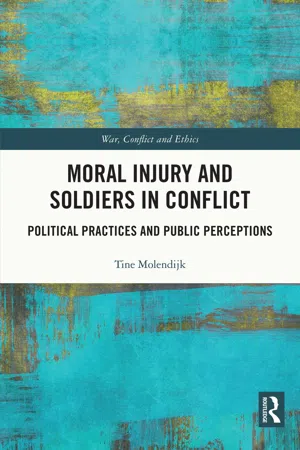
Moral Injury and Soldiers in Conflict
Political Practices and Public Perceptions
- 182 pages
- English
- ePUB (mobile friendly)
- Available on iOS & Android
About This Book
This book advances an interdisciplinary understanding of moral injury by analyzing the stories of military veterans of combat and peace missions.
In the past decade, the concept of moral injury has emerged to address the potential moral impact of deployment. This book contributes to an interdisciplinary conceptualization of moral injury while, at the same time, critically evaluating the concept's premises and implications. It paints an urgent and compassionate picture of the moral impact of soldiers' deployment experience and the role of political practices and public perceptions in moral injury. It does so by drawing on the experiences of close to a hundred Dutch veterans deployed to Bosnia (Srebrenica) and Afghanistan, and analyzing their stories from the perspectives of psychology, philosophy, theology and social sciences. Ultimately, this book advances the understanding of moral, political and societal dimensions of moral injury and contributes to practical efforts aimed at its prevention.
This book will be of much interest to students of ethics and war, cultural anthropology, conflict studies and international relations.
Frequently asked questions
Information
Part I
Setting the stage
1 Introduction
Moral injury: linking the ethical and the psycholo...
Table of contents
- Cover
- Half Title
- Series Page
- Title Page
- Copyright Page
- Dedication
- Table of Contents
- List of figures and tables
- Acknowledgements
- Glossary of military terms and ranks
- Maps of mission areas
- Part I: Setting the stage
- Part II: Soldiers in conflict
- Part III: Conclusions: Practical and theoretical implications
- Index